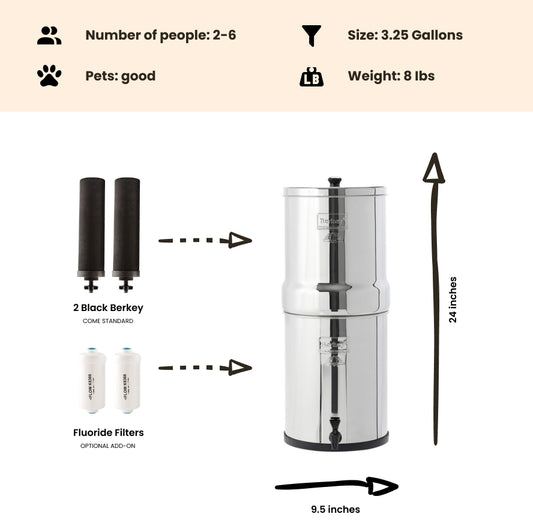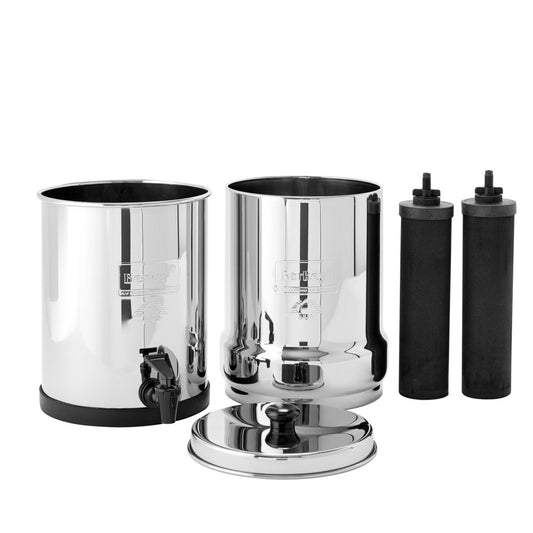
Arsenic in Well Water Poses a Health Threat to Residents Across the USA
By Dan DeBaunShare
** Newly released scientific journal study highlights danger of Arsenic in private wells across the US and Canada ** Researcher suggests "Arsenic is the biggest public-health problem for water in the United States" ** Low level arsenic exposure reduces IQ in children along with impaired lung function, heart disease and cancer ** Many homeowners unaware of potential exposure due to lack of state regulation ** USGS Graphic below shows arsenic hot spots wide-spread across the US
Arsenic that occurs naturally in private wells across many states in the US, as well as Canada, poses a health risk to people who rely on these wells for drinking water, according to a series of scientific studies published this week in a special section of the scientific journal Science of the Total Environment. The studies provide insight into the geological mechanisms that cause this contamination, and highlight the present and continuing risk posed by arsenic contaminated well water due to lack of regulation across most states and inadequate precautionary or mitigation measures put in place by homeowners.
The reports add to a new body of evidence that show that exposure to low levels of arsenic can reduce IQ of children, and existing evidence that arsenic poses an increased risk of impaired lung function, heart disease, and cancer.
"Arsenic is the biggest public-health problem for water in the United States--it's the most toxic thing we drink," said geochemist Yan Zheng, an adjunct research scientist at Columbia University's Lamont-Doherty Earth Observatory, who coedited the special section and coauthored some of the articles. "For some reason, we pay far less attention to it than we do to lesser problems."
Soil and rocks very often contain traces of arsenic that are inert and harmless, but recently geologists have noticed that certain geological sediments can become arsenic enriched, and under certain conditions can chemically react with groundwater to release the arsenic into these aquifers. This problem is not unique to the US - it has been identified in around 70 countries throughout the world, with Asia being the most severely affected.
In the US private wells that are mostly unregulated provide drinking water to 43 million people. Previous studies conducted by the US Geological Survey (USGS) found that 6.8% of wells tested fail to meet drinking water safety standards set by the EPA for arsenic in public drinking water supplies, which was reduced from 50 parts per billion (ppb) to 10 ppb in 2001.
Given these figures, it is believed that around 3 million Americans are affected, but according to Joseph Ayotte, a USGS hydrologist and coeditor of the special section published in this journal, distribution of high concentrations of arsenic are spotty, making it difficult to reliably predict the amount of people directly affected. Maps of arsenic distribution show patches throughout New England and the Great Lakes, extending from the Pacific Northwest down to California and across the western part of the country to Texas. In New England 20% of wells are contaminated, and in Maine, where the contamination rate is as high as 45%, approximately 80,000 residents are affected.
Public water supplies that provide water to more than 25 people have to meet the safety standards, and while most do, through additional filtration when necessary, a recent study conducted in 2014 by the Columbia Water Center shows that 500 public water utilities (primarily small public water utilities in rural areas) still fail to meet the safety standard, largely due to the additional cost associated with arsenic removal.
However, unlike public water utilities, private wells are completely unregulated and in many cases have never been tested for arsenic. The authors estimate that up to a third of the population in the study area are at risk of exposure to levels of arsenic that are above the safety standard.
In one study conducted by Sara Flanagan, a researcher at Lamont-Doherty, a group of homeowners who had been notified 3-7 years prior to the study that water in their wells was contaminated, were surveyed. Forty-three percent of these homeowners had since resorted to water filtration to reduce their exposure, while 30% resorted to other measures (e.g. purchasing bottled water) to reduce their risk. However, the remaining 27% simply did nothing to reduce their exposure to arsenic, choosing to be optimistic instead.
"People say, 'I'm not going to worry about it--maybe I'll get cancer, maybe I won't," said pharmacologist Joseph Graziano, a leading arsenic expert and Earth Institute professor at Mailman who oversees Columbia's work on the issue. "For [local and state] government, it's a hardy perennial--once in a while it gets some press, there's a little shuffle of activity, then it dies again until the next study comes out."
Research conducted on households within the Maine study area, revealed that even when homeowners did take steps to filter their water, 15% of homes failed to produce water that met the safety standards set by the EPA for arsenic.
Furthermore, researchers feel that the reduced level of 10ppb set by the EPA may not be low enough. While past studies have shown that arsenic levels higher than this pose a high risk of lung, bladder and skin cancer, as well as heart disease, a more recent study conducted in Maine school districts in 2014 by a research team affiliated to the Columbian researchers found that arsenic levels as low as 5 ppb reduced children's IQs by 5-6 points. While the state of New Jersey -- one of the few states to take a proactive approach -- has since reduced the safety limit for arsenic to 5ppb, 20% of Maine's wells are thought to violate the 5ppb level, according to state officials.
"The risk for pregnant women and children is much higher," said Graziano. "We're hoping that recognition may be a turning point in getting more action."
The Columbian research team is now working with the Maine Geological Survey and Maine Center for Disease Control and Prevention to assess ways they can motivate homeowners to get their wells tested. State officials in Maine are also contemplating implementing a law that requires making the testing of wells mandatory whenever a home is sold.
If you are concerned about the levels of arsenic in your drinking water, any of the systems from Big Bekey Water Filters will handle this for you. Both the standard black berkeys that come with all our systems, as well as the PF-2 add-on filters target arsenic removal from the drinking water.
Journal Reference Papers from the special section, "Arsenic in well waters of the northeastern United States and Atlantic Canada," (pages 1237-1379 of Science of the Total Environment) can be accessed online.
-
Regular price $234.00 USDRegular priceUnit price / per
-
Regular price $327.00 USDRegular priceUnit price / per
-
Regular price From $367.00 USDRegular priceUnit price / per
-
Regular price From $408.00 USDRegular priceUnit price / per
-

 Sold outRegular price From $451.00 USDRegular priceUnit price / per
Sold outRegular price From $451.00 USDRegular priceUnit price / per -
Regular price From $478.00 USDRegular priceUnit price / per
-
Regular price $332.50 USDRegular priceUnit price / per
$350.00 USDSale price $332.50 USDSale

Dan DeBaun is the owner and operator of Big Berkey Water Filters. Prior to Berkey, Dan was an asset manager for a major telecommunications company. He graduated from Rutgers with an undergraduate degree in industrial engineering, followed by an MBA in finance from Rutgers as well. Dan enjoys biohacking, exercising, meditation, beach life, and spending time with family and friends.
~ The Owner of Big Berkey Water Filters
















